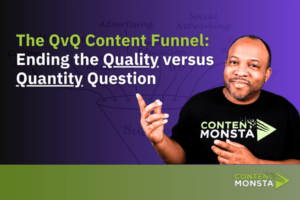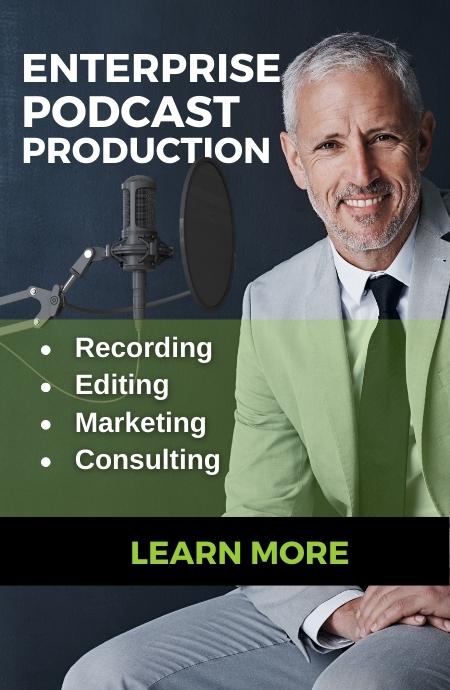If you are wondering about the best marketing strategy for your brand, stay tuned for our discussion on content marketing vs. advertising, and find out which one we believe is winning and why.
Content Marketing vs. Advertising
Content marketing includes blogs, newsletters, quizzes, emails, videos, infographics, and podcasts. Traditional advertising focuses on web banners, print ads, television or radio commercials, brochures, or flyers.
Both can be distributed via social media, Search Engine Results Pages (SERPs), websites, and various other digital platforms. Here are some key differences:
Time period
Advertising relies on the hope that when you see a product ad, you will buy the product. Unfortunately, this isn’t always the case because a prospective customer usually has to see an ad seven times over a period of months for a company, product, or service to seem reliable and necessary.
With content marketing, even though your content may be constantly showing up in front of your target audience, you’re not immediately pushing for the sale of a product or service. This gives you a chance to offer more value to potential customers.
It also allows the potential customer to appreciate and expect your existence so that later you can turn them into a buyer.
Marketing and advertising has changed drastically over the years, forcing content creators and business owners to learn how to analyze and use digital data. Previously, ads weren’t always able to be targeted towards a specific customer which resulted in them popping up in random areas.
Now, thanks to software designed for analyzing customer behaviors, both content marketing and advertising can get your product/service delivered to the right people. Content marketers research their audience and get to know what types of content they like the most by determining trends.
Advertisers use analytic tools to find commonalities amongst their target audience and make sure their ads show up in those spaces.
Business-driven vs. Peer-driven Marketing
Content marketing, especially in the digital world, allows for consumers to easily see whether or not other people recommend a product/service. If someone they know has already liked or recommended it, they’re more likely to purchase as well.
Consumers are able to easily view likes, search hashtags, see reviews, etc. Additionally, if you are creating shareable content, your target audience is constantly seeing recommendations about your product/service from their immediate friends and family.
When they combine this with the way the business makes them feel, they are able to make a decision of whether to proceed forward with a purchase.
When it comes to advertising, the business decides where and when their ads will be shared. People typically do not share advertisements with others unless it is a really great sale or deal.
This leaves all the responsibility on the business to persuade a cold market to make a decision about a product/service that they are usually unfamiliar with. It also doesn’t help that most consumers are skeptical of being sold to and have developed “ad blindness.”
Permission
Content marketing gives the audience the freedom to search for and consume the content they want. When a potential customer interacts with your content by leaving a comment, sharing/tagging you, or inputting their email address on your website it lets you know that you now have permission to reach out to them and begin building an even deeper relationship.
Advertisements are disruptive and usually reach consumers when they aren’t expecting it. An advertiser’s goal is to distract potential buyers from their current activities and encourage them to learn more about your product/service.
The consumer must make the decision to proceed forward and engage with the advertisement.
Although in both situations the consumer must initiate contact with the business, they are more likely to engage with material produced by a content marketer because they don’t feel they’re being sold to.
Information
Content marketing focuses on providing value to the consumer. It may educate the audience about a specific industry, show them how to make the right shopping decisions, or entertain them. This leads to higher engagement, brand trust, and loyalty.
Traditional advertising generally includes only information on the product/service it is intended to sell. Although some ads use entertainment to engage the consumer, their main goal is to persuade buyers to make a purchase.
Innovative advertisers recognize the importance of also boosting posts that are content specific and not focused on generating an immediate sale.
Interaction
Content marketing aims to help you start a conversation with your audience. By sharing value and communicating with your buyers consistently, you can become a leader in your industry.
As a result, customers will trust your brand and eventually decide to buy your product. Content that is effective in starting conversations with customers can be events, user-generated content, and webinars.
Advertisements only allow one-way communication with potential customers while asking for an immediate response. Marketers share information about the products or services in front of their target group and hope that some of them will take action and become customers.
The Cost of Content Marketing vs Advertising
Cost is a major factor when it comes to choosing the right marketing strategy. When you compare the costs, you will find that content marketing is more affordable.
According to Forbes, content marketing is 62% more cost-effective than traditional ads and provides three times more leads.
While both content marketing and advertising can vary widely in the cost of production, once produced the cost of content marketing quickly drops. Each time an advertisement is shown, there is cost.
Once distributed, content marketing content can live on perpetually without any additional cost. This is one of the biggest reasons that content marketing achieves such a greater ROI over advertising.
The Cost and ROI of Content Marketing
Content marketing is, on average, 62% less expensive than advertising. If you want to determine if a content marketing strategy is a good idea, you must first find out how much it costs.
Then, you can calculate the marketing strategy’s ROI and its ability to attract conversions. As OptinMonster has stated, there are several factors that you have to include in the content marketing strategy costs. To calculate the content strategy’s ROI, the basic formula would be:
- Add up all of the sales that were directly linked to the content (a science within itself), then subtract the investment costs.
- Divide this sum by the total investment made and multiply its result by 100.
- Now, you’ve got an ROI on your content marketing strategy.
If you’re worried about how effective your content marketing actions will be, remember that 63% of enterprise marketers have stated they were able to generate leads or demands with a quality content marketing strategy.
The Cost and ROI of Advertising
Since 2019, the average small business spends between $9,000 and $10,000 monthly on online advertising campaigns. How much you have to pay per keyword can vary drastically, and it depends on what your keywords target topics may be.
It all comes down to evaluating the cost and results. For example, Facebook’s average CPCs are relatively affordable, and Facebook Ads often have great results – which means you can potentially get a huge ROI.
If you’re mainly trying to educate people on what value you offer or what your brand does, you will probably have more success with content marketing than with advertising. On the other hand, if you have a product/service that you want to generate sales for, you should include advertising.
Generally, businesses are moving in a content marketing direction. When you are choosing a strategy, there is no doubt you should definitely choose content marketing as a leading option within that overall strategy. It is easier, more effective, and more affordable. However, this does not mean that you should completely ignore the need for advertising. The best marketers can integrate both marketing strategies. Apply a multichannel marketing strategy and use content to funnel prospective customers into a specific engagement series. Once you have built a relationship with the customer, begin to include traditional marketing and advertising tactics to convince them to buy your product/service.
Want to learn more? Talk to a professional at Content Monsta!

The QvQ Content Funnel: Ending the Quality versus Quantity Question
Marketers often debate whether to prioritize the quality or quantity of content. The QvQ Content Funnel proposes a strategy to balance both, tailoring content type and volume to different sales funnel stages. This method enhances engagement, drives conversions, and builds customer loyalty by delivering the right content at the right time.

5 Digital Marketing Content Types That Drive Business
There are several digital marketing content types that are sure to drive business over the coming years. It’s no secret that content marketing is the driving force behind most, if

Marketing Video Budget – How to secure executive approval
Discover how to secure executive approval for your video marketing budget. This article teaches you to address the critical concerns of CFOs and CMOs, focusing on efficiency, cost-effectiveness, and ROI. Learn strategies for promoting quick turnarounds, diversifying video content, and implementing remote production. Equip yourself with the tools to present a strategic, results-oriented plan that aligns with your company’s goals and impresses your executives.


